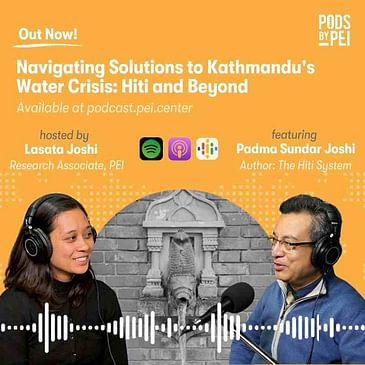#Ep.080
Padma Sundar Joshi is the Vice President of Madan Bhandari University of Science and Technology. He has more than a decade of experience in. urban planning and environment. He has worked with the city office on projects like. the Municipal Infrastructure Improvement Project and the Kathmandu Valley mapping program. He has published books and a series of articles on urban development, including a recent publication titled The Hiti System: Past, Present, and Future.
Lasata and Padma discuss the intricate relationship between. water and urbanism in Kathmandu Valley, focusing on the traditional water management system known as Hiti Pranali. Covering historical backgrounds and the current challenges the valley faces, including water shortages and climate change impacts, they explore the potential of traditional systems like Hiti in addressing modern water management issues. The conversation extends to ongoing projects and challenges restoring the Hiti and other traditional water systems, emphasizing their significance as sustainable, nature-based solutions.
If you liked the episode, hear more from us through our free newsletter services, PEI Substack: Of Policies and Politics, and click here to support us on Patreon!!




